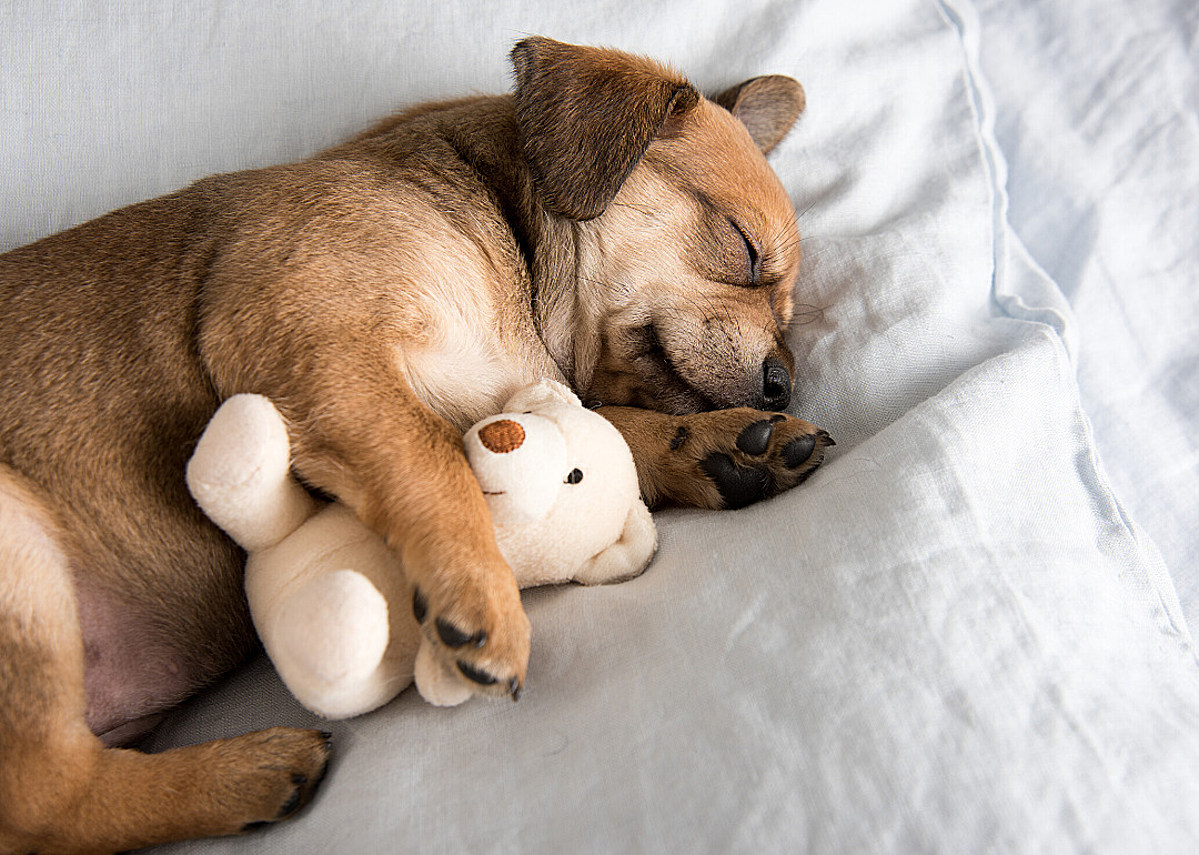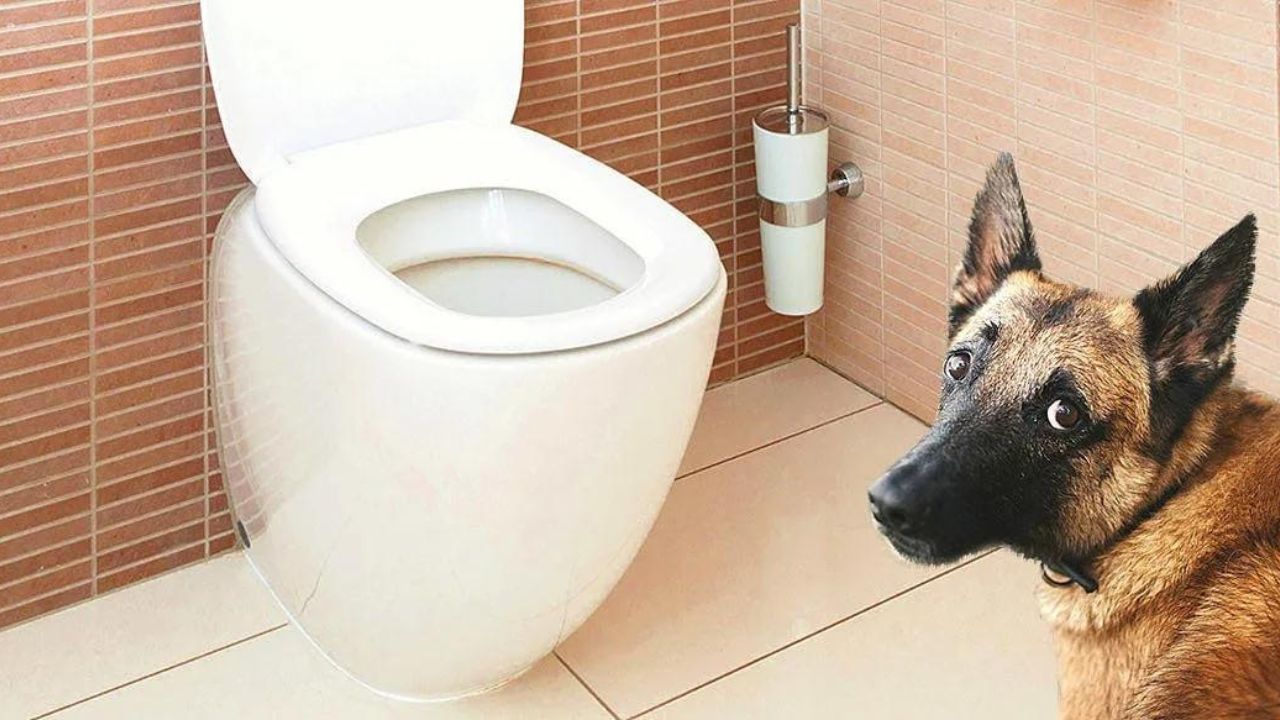
If you’re a proud puppy parent, you know that creating a comfortable sleeping environment for your furry friend is crucial. Just like humans, puppies need a cozy and comfortable space to rest their heads after a long day of playtime and training. But with many options available, from orthopedic beds to luxurious blankets, how do you create the perfect sleeping environment for your pup?
Well, you’re in luck because, in this article, we’ll dive into the world of puppy sleep and discuss the importance of creating a comfortable sleeping environment for your furry friend. We’ll be exploring everything from the bed type to the ideal location for your pup’s bed and even the impact of temperature and humidity on your pup’s sleep.
But before we get into the nitty-gritty, let’s take a moment to appreciate just how much our puppies love to sleep. Did you know that, on average, puppies sleep 12-14 hours daily? That’s right; our furry friends need plenty of rest to recharge their batteries and develop into happy, healthy adult dogs. So, ensuring your puppy has a comfortable and safe place to sleep is important.
Now, let’s return to creating the perfect sleeping environment for your pup. With the tips and suggestions we’ll share in this article, you can create a cozy and comfortable space for your furry friend to rest and relax. So, please grab a cup of coffee, sit back, and let’s get started!
Why a Comfortable Sleep Environment is Important for Your Puppy
As mentioned earlier, puppies need a lot of sleep to support their growth and development. But did you know that a comfortable sleep environment can also positively impact your pup’s mental and physical health? Just like humans, puppies can suffer stress, anxiety, and depression. Creating a cozy and secure sleeping space can help alleviate these issues and create a sense of calm and relaxation for your furry friend.
A comfortable sleep environment can also help prevent health problems arising from improper sleeping habits. For example, if your pup sleeps on a hard or uneven surface, it can put pressure on their joints and cause discomfort or even pain. An uncomfortable sleeping space can also disrupt your pup’s sleep cycle, leading to sleep deprivation and various health problems.
Now that we know why a comfortable sleep environment is essential for your pup’s health and happiness let’s dive into how to set it up.
Creating a Calming Environment
We all want our puppies to feel safe, secure, and relaxed in their home, especially regarding their sleeping environment. Puppies are sensitive to their surroundings, and a calm environment can help reduce stress and anxiety, leading to better sleep and overall health. In this section, we’ll discuss some tips on creating a calming environment for your pup’s sleeping space.
Minimize Noise
Noise can be a major source of stress for puppies. From traffic outside to loud music or TV, noises can disrupt your pup’s sleep and lead to anxiety. To create a calm environment, minimize noise by placing your pup’s bed in a quiet area of your home. You can also use white noise machines or calming music to drown out external sounds and create a more relaxing atmosphere.
Use Soothing Colors
Colors have a powerful impact on our emotions and mood; the same goes for our furry friends. Choose calming colors such as blue or green to create a soothing and relaxing environment for your pup’s sleeping area. Avoid bright and bold colors, which can be overstimulating and may increase your puppy’s anxiety.
Maintain a Comfortable Temperature
Temperature plays a vital role in our pup’s sleep quality. An environment that’s too hot or cold can cause discomfort and lead to restless sleep. To create a calming environment, maintain a comfortable temperature in your pup’s sleeping area. The ideal temperature for most puppies is between 65-75 degrees Fahrenheit.
Provide a Safe and Secure Space
Puppies feel most relaxed and calm when they feel safe and secure. Provide a safe and secure space using a crate or a designated sleeping area. Ensure the area is free of any hazards, such as cords or sharp objects, that could cause harm to your pup. You can also use a blanket or a familiar toy to provide comfort and security for your pup.
Consider Aromatherapy
Aromatherapy can be a great way to create a calming environment for your pup. Essential oils such as lavender and chamomile have natural calming properties and can help reduce stress and anxiety in puppies. Use a diffuser or spray a small amount of the essential oil in your pup’s sleeping area to create a relaxing atmosphere.
By implementing these tips, you can create a calming environment for your furry friend’s sleeping space.
Choosing the right location
Choosing the right location for your puppy’s bed is as important as selecting the right one. Puppies are sensitive creatures, and their sleeping environment can greatly affect their well-being. A comfortable location can help your furry friend feel safe and secure, essential for a good night’s sleep.
So, where should you place your puppy’s bed? First and foremost, it’s important to choose a quiet and cozy spot away from high-traffic areas. Puppies need security and safety, so avoid placing their bed near doors or windows that may cause distractions or disruptions.
One great option is to place your puppy’s bed in a designated room. This can be a spare bedroom or even a corner of your bedroom. Puppies are social animals and enjoy being close to their humans, so having their beds nearby can provide comfort and security. Plus, a room with a door can help muffle any outside noise and provide a peaceful sleeping environment.
Another option is to place your puppy’s bed in a crate. This is especially helpful for puppies who are still house-trained or may tend to chew on furniture or other items. A crate provides a safe and secure space for your puppy to sleep and can help with separation anxiety.
If you choose to use a crate, ensure it’s the appropriate size for your puppy. The crate should be large enough for your puppy to stand up, turn around, and lie down comfortably but not so large that they have ample space to roam around. This can cause your puppy to feel insecure and lead to poor sleep quality.
Temperature and Humidity Control
Temperature and humidity control are crucial factors when creating a comfortable sleeping environment for your furry friend. Just like humans, puppies can become uncomfortable and even sick if their sleeping area’s temperature and humidity levels are not just right.
Temperature control is particularly important, as puppies are less tolerant of extreme temperatures than adult dogs. If the temperature is too hot or cold, your pup’s sleep can be disrupted, leading to irritability, restlessness, and a lack of energy. According to experts, the ideal temperature range for a puppy’s sleeping environment is 65-75 degrees Fahrenheit. If your puppy is prone to feeling cold, consider adding a cozy blanket or heated pad to their bed.
Humidity control is also important for your pup’s comfort and health. High humidity levels can make it difficult for puppies to regulate their body temperature, leading to extreme discomfort and heat stroke. On the other hand, low humidity levels can cause dry skin and respiratory problems. The ideal humidity level for a puppy’s sleeping environment is 30-50%. If the humidity levels in your home are outside of this range, consider using a humidifier or dehumidifier to adjust the levels accordingly.
By adjusting the temperature and humidity levels in your pup’s sleeping environment, you can help ensure that they get the restful and rejuvenating sleep they need to grow and thrive. So, next time you’re setting up your pup’s sleeping area, remember to consider the importance of temperature and humidity control. Your furry friend will thank you!
Comfortable Bedding
When creating a comfortable sleeping environment for your puppy, selecting the right bedding is just as important as choosing the perfect bed. The right bedding can make all the difference in ensuring your furry friend has a cozy and comfortable place to rest their head each night. Here are some tips for selecting the perfect bedding for your pup:
Material Matters
The material is the first thing to consider when selecting bedding for your puppy. You want to choose a material that is comfortable, durable, and easy to clean. Some of the most popular materials for puppy bedding include cotton, fleece, and memory foam. Each material has its benefits and drawbacks, so choosing one that works for you and your pup is important. For example, cotton bedding is lightweight and breathable, perfect for warmer climates. Fleece bedding, on the other hand, is warm and cozy, making it ideal for colder temperatures.
Size Matters Too
Another factor to consider when selecting bedding for your puppy is the size. You want to choose a bed big enough for your pup to stretch out and get comfortable. At the same time, you don’t want the bed to be too big, as this can overwhelm your puppy and make them feel less secure. The general rule of thumb is to choose a bed that is at least as long as your puppy from nose to tail.
Hygiene is Key
One of the most important things to consider when selecting bedding for your puppy is hygiene. You want to choose bedding that is easy to clean and maintain, as this will help prevent the spread of bacteria and keep your pup healthy. Look for machine washable and dry bedding, as this will make it easy to keep the bedding clean and fresh.
Consider Allergies
Finally, it’s important to consider any allergies or sensitivities your puppy may have when selecting bedding. If your puppy has allergies, you’ll want to choose hypoallergenic bedding free of any potential allergens. This may mean selecting bedding that is made from natural materials or that has been treated to remove allergens.
Ensuring Puppy Safety
As a responsible pet owner, one of the most important things you can do is ensure your puppy’s safety. Puppies are curious and energetic creatures who love to explore the world around them. However, this natural curiosity can also harm them, especially if you don’t take the necessary precautions to keep them safe. Here are some tips to help you ensure your puppy’s safety:
Puppy-Proof Your Home
Before bringing your new puppy home, it’s important to puppy-proof your house. This means removing any potential hazards your puppy could get into, such as toxic plants, cleaning supplies, electrical cords, and small objects that could be choking hazards. You should also ensure that windows and doors are securely closed to prevent your puppy from escaping.
Keep Your Eye on Them
When you first bring your puppy home, it’s important to always keep a close eye on them. Puppies are like toddlers; they always get into things they shouldn’t. By keeping a watchful eye on your puppy, you can prevent accidents and keep them safe.
Socialize Them Safely
Socializing your puppy is important for their development, but it’s important to do it safely. Ensure that any other dogs your puppy interacts with are up-to-date on their vaccinations and friendly towards other dogs. You should also avoid taking your puppy to places where there are a lot of unknown dogs, such as dog parks until they are fully vaccinated.
Train Them Well
Training your puppy is another important step in ensuring their safety. By teaching your puppy basic commands, such as “come” and “stay,” you can prevent them from running into dangerous situations. It would be best to teach your puppy to walk on a leash and stay close to you when out in public.
Provide a Safe Environment
Finally, providing your puppy with a safe and secure environment is important. This means providing them with a comfortable and cozy sleeping area, keeping their food and water bowls clean, and ensuring they have plenty of toys. You should also ensure that your puppy has access to fresh air and sunlight, but supervise them when they’re outside.
Consider Your Puppy’s Health
Of course! When creating a comfortable sleeping environment for your puppy, it’s important to consider their health needs. After all, just like humans, puppies can have various health issues impacting their sleep and overall well-being. Here are factors to keep in mind when it comes to your puppy’s health:
Joint Pain: Just like older humans, puppies can experience joint pain and discomfort, especially if they’re a large breed or have a genetic predisposition to joint issues. In this case, an orthopedic bed can be a great investment for your pup. These beds are designed to support your puppy’s joints and offer extra comfort while sleeping.
Allergies: Puppies can be prone to allergies, just like humans. If your pup has allergies, it’s important to consider the materials used in their bedding. For example, some dogs may be allergic to synthetic materials, so choosing natural materials such as cotton or wool can be a good choice. Additionally, wash their bedding regularly with hypoallergenic detergent to reduce the risk of irritation.
Breathing Issues: Some puppies may have breathing issues that can impact their sleep. For example, brachycephalic breeds such as pugs and bulldogs are prone to breathing difficulties due to their flattened faces. In this case, avoiding anything obstructing their airways is important, such as using a collar instead of a harness or placing their bed in a humid or dusty area.
Age: Just like humans, puppies have different sleep needs depending on their age. Younger puppies may need more frequent naps throughout the day, while older puppies may be able to sleep for longer periods at night. It’s important to remember your puppy’s age when creating its sleeping environment and adjust accordingly.
Considering your puppy’s health needs, you can create a comfortable sleeping environment that promotes overall well-being.
Conclusion
Creating a comfortable sleeping environment for your furry friend isn’t just about spoiling them with luxurious beds and blankets (although that’s always a bonus!). It’s about ensuring your puppy gets the rest they need to grow into a happy, healthy adult dog.
By choosing the right bed for your pup and placing it in the ideal location, you can create a cozy and quiet space to help your puppy feel safe and secure. Consider factors like temperature and humidity, as these can greatly impact your pup’s sleep quality.
And, of course, let’s remember the importance of comfortable bedding. From soft cotton sheets to fluffy fleece blankets, there are plenty of options to choose from when it comes to bedding for your pup. Remember to keep it clean and hygienic to promote a healthy sleeping environment.
We hope this article has given you helpful tips and insights on creating the perfect sleeping environment for your furry friend. Remember to consult your veterinarian if you have concerns about your puppy’s sleep habits or health.
And last, remember to enjoy those snuggles and cuddles with your pup while they sleep. After all, there’s nothing quite as heartwarming as a happy and content sleeping puppy!








